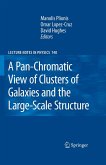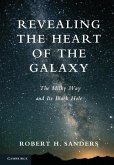Written in an informal and engaging style, this volume traces the discoveries that led to our understanding of the size and structure of the Milky Way, and the conclusive evidence for a massive black hole at its center. Robert H. Sanders, an astronomer who witnessed many of these developments, describes how we parted the veil of interstellar dust to probe the strange phenomena within. We now know that the most luminous objects in the Universe - quasars and radio galaxies - are powered by massive black holes at their hearts. But how did black holes emerge from being a mathematical peculiarity, a theoretical consequence of Einstein's theory of gravity, to become part of the modern paradigm that explains active galactic nuclei and galaxy evolution in normal galaxies such as the Milky Way? This story, aimed at non-specialist readers and students and historians of astronomy, will both inform and entertain.
Dieser Download kann aus rechtlichen Gründen nur mit Rechnungsadresse in A, B, BG, CY, CZ, D, DK, EW, E, FIN, F, GR, HR, H, IRL, I, LT, L, LR, M, NL, PL, P, R, S, SLO, SK ausgeliefert werden.
'In his captivating book Sanders gives an authoritative and entertaining, easy-to-read account of this 'detective story', from the beginnings in the last century to the most recent developments. As he tells his story, [he] conveys to the reader the fascination of research, the often unexpected discoveries, but also the meandering path of the research towards better understanding and knowledge, including the 'human' side of some of the major players in the story. I highly recommend this book to readers who want to understand and get captivated by one of the highlight discoveries of modern astronomy.' Reinhard Genzel, Max Planck Institute for Extraterrestrial Physics









